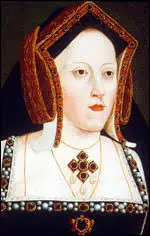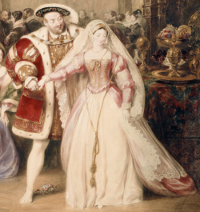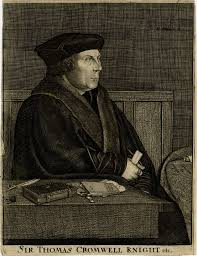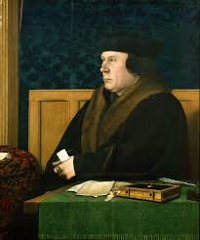Thomas Cromwell: Henry VIII's 'Fixer' and Enforcer
Thomas Cromwell was the engineer of some of the most sweeping changes in English history. As chief minister to King Henry VIII, he ensured that the king had all the money, power, support, and confidence that he needed to divorce not only his wife but also the Catholic He was born in 1485 in Putney, London. His father, Walter, had several jobs, among them brewer and smith, and was a bit of a rough character. Growing up, Thomas followed in his father's rough footsteps for a time. Walter was fond of beating his son, and so young Thomas ran away from home when he was 15. He flitted around Europe for a time, fighting in the French army at the Battle of the Garigliano, a 1503 victory for Spain in Naples, and then taking one of several positions as a merchant and a trader. He was helped along his way by a rich benefactor, the banker Francesco Frescobaldi, who took pity on the penniless Englishman and showed him the ways of business. In 1515, Cromwell returned to England, where he married Elizabeth Wykes. (They had three children together.) The first well-known example of Cromwell's talents to turn a situation to his advantage by the possessing the proper intelligence involved a man who wanted to see the Pope. Geoffrey Chamber was on a journey to implore Pope Leo X to provide funding for a church in Lincolnshire when he met Cromwell. The latter, once he heard the former's plan, took it on himself to get involved. He knew that the Pope liked sweetmeats and so had a lot of them ready for the Pope when he returned from a hunting trip. The Pope was so impressed with Cromwell that he granted his wish, which was really Chamber's wish. 
By this time Cromwell had spent some time in Italy, in Naples and Florence and Rome. Cardinal Thomas Wolsey, then the right-hand man of King Henry VIII, heard of Cromwell and offered him a position to work for him. Cromwell gained access to the royal court and excelled in getting things done, for Wolsey and for Henry. In 1523, Cromwell became a Member of Parliament, representing Taunton. Cromwell, who proved to be a brilliant lawyer and statesman, found great success working for Wolsey and appreciated and supported his employer. This support did not waver when Wolsey was removed from office and condemned to death by Henry for proving unable to convince the Pope to annul the king's marriage to Catherine of Aragon. Cromwell feared that he, too, would be executed and so had his will prepared. Henry was not of a mind to do that, however; on the contrary, he eventually named Cromwell his chief minister. This success was tempered somewhat by Cromwell's personal losses, which included the deaths of his wife and two daughters at this time from an outbreak of the sweating sickness. 

It was Thomas Cromwell who conceived the idea of making Henry VIII Head of the English Church. If the king were head of the church, then he could issue rulings on matters of state and the law. If Rome were no longer head of the English Church, then it didn't matter to Henry and England what the Pope would or would not countenance. In due course, Henry got his way: His marriage to Catherine of Aragon was annulled, and he was free to marry Anne Boleyn. Displaying a command of anticipatory detail, Cromwell introduced into Parliament a bill to restrict appeals to Rome; Parliament's approval of the bill meant that challenges to Henry's second marriage and to his status as head of the English Church could not be appealed to the Pope. Henry rewarded Cromwell for his efforts by naming him Chief Minister. Cromwell further solidified Henry's status as the country's chief religious official by requiring all citizens to swear an oath of loyalty to the king as head of both realm and church. Many people found it wise to do so; those who did not were subject to punishment. One of the most prominent people to refuse to take such an oath was Sir Thomas More, the former Lord Chancellor, who had also not countenanced Henry's annulment or subsequent marriage to Anne Boleyn. More's steadfast refusal to recognize Henry in that way led to More's execution. Cromwell also sought out opportunities to make the Crown money. With the Act of Supremacy and the severing of England from the Catholic Church, the monasteries no longer held such political sway. It was under Cromwell's direction that Henry ordered the Dissolution of the Monasteries, having buildings destroyed and church coffers emptied, with the contents being sent to fill the royal coffers. Henry was still very much in want of a son, and so he began to distrust Anne as he had Catherine. On Jan. 8, 1536, Catherine, long in seclusion, died. Anne was pregnant at the time (with a son) but lost the child through a miscarriage brought on by shock at Henry's life-threatening injuries suffered in a jousting tournament. The king and queen had grown apart, and Anne was rumored to be romantically involved with other men. The fact that the king was rumored, if not known, to be romantically involved with other women was not considered of equal consideration at this time. Anne, along with several men who were charged with being her paramours, were executed for treason on May 17, 1536. Cromwell, despite being a strong ally of Boleyn previously, played a major part in bring about these executions. The very next day, Henry was again engaged to be married, again to a queen's lady-in-waiting, this time to Jane Seymour. They were married on May 28, 1536. The following October, Henry and Jane succeeded where Henry and both Catherine and Anne had failed, when Jane gave birth to Edward, a healthy baby boy. Henry finally had his son and (preferred) heir. Joy quickly turned to sorrow because the royal wife (who had never been crowned queen) had fallen ill because of complications from the difficult birth. She died on October 24. 
Henry tasked Cromwell with finding the next royal wife. Cromwell, seeking to make an alliance with a group of Protestant princes in Germany, suggested that the king marry Anne, the daughter of the Duke of Cleves. Cromwell sent a painter to Germany, and the result was a portrait that was then shown to Henry, who then agreed to send for Anne, in order to marry her in England. Seeing her in person, Henry was not so sure of the match, but Cromwell persuaded the king to marry Anne, and so the two were married. Their union lasted six months, after which time both agreed to an annulment. Henry, not to mention Cromwell's enemies, blamed Cromwell for the marriage disaster. The onetime confidant of the king found himself charged with treason and corruption. He was executed at the Tower of London on July 28, 1540. On that very day, Henry married again, to Catherine Howard. It didn't take the king long to regret his decision to have Cromwell killed. |
|
Social Studies for Kids
copyright 2002–2026
David White



 Church. Yet for all of his successes, Cromwell made one bog mistake and paid for it with his life.
Church. Yet for all of his successes, Cromwell made one bog mistake and paid for it with his life.
